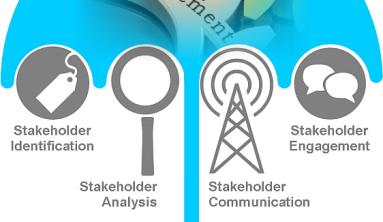“I am definitely going to take a course on time management… just as soon as I can work it into my schedule.” – Louis E. Boone
Aspirants of PMP exam must cement their understanding of some of the key terms and concepts, before working on individual processes covered in each knowledge area. By doing so, they will be able to reduce the time required to understand the processes and prepare well for the exam.
In this article, we will make an attempt to understand some of the key terms and concepts in Project Time Management knowledge area.
Activity Decomposition
It is similar to scope decomposition, except that the final result here is an activity list instead of the WBS. Each work package at the bottom of the WBS is decomposed into smaller pieces known as schedule activities.
Activity Duration Estimates
Probable number of periods (weeks, hours, days, months) this activity should take with the probable range of results.
Example:
Activity Duration Estimate Explanation
1 week + - 3 days The activity should take between 2 and 8 days
assuming a 5-day work week.
1 month + 20 % probability it will There is an 80% likelihood that the activity will be
accomplished later completed within a month and 20% chance it will
exceed a month.
Activity List
It is a list of every activity that will be performed on the project. Each activity list should map back to one and only one work package. The activity list is generally limited only to an identifier, such as an activity name or a unique numeric identifier and a description.
Activity on Arrow Diagram
It is a rarely used type of activity network diagram where activities are represented by the arrows connecting the nodes. Nodes are typically represented by circles in this type of project network diagram.
Activity on Node Diagram
It is the most commonly used type of activity network diagram in which activities are represented on rectangular nodes with arrows representing the dependencies. Activity network diagrams are used with project scheduling methodologies, such as program evaluation and review technique (PERT), critical path method (CPM) and precedence diagramming method.
Analogous Estimating
It is a technique used for estimating the duration or cost of an activity or a project using historical data from a similar activity or a project. This form of expert judgment is used early in the project when little information is available on the project.
Backward Pass
It is a critical path method for calculating late start and late finish dates for an activity by working backwards through the schedule model from the project end date.
Critical Path
It is a path through the network diagram that shows which are the activities, when delayed, affect the project finish date. It is the sequence of activities that represents the longest path through the project, which determines the shortest possible duration. For a schedule, the critical path represents the highest risk path in the project.
Dependencies
These are activities that must be completed before other activities are started or completed. They are characterized by the following attributes: mandatory or discretionary, internal or external.
Mandatory
These activities are also called as 'hard logic ' and must be followed in sequence.
Discretionary
These activities are sometimes referred to as preferred logic, preferential logic or soft logic. Often expert judgment and best practices dictate the performance of particular activities in a particular order. These dependencies are discretionary because they are based on expert opinion rather than mandatory or hard logic.
Internal
Internal dependencies are generally inside the project teams control and involve a precedence relationship between project activities. For example, a team cannot test a machine until they assemble it and it is an internal mandatory dependency.
External
These dependencies rely on factors outside of the project and are usually beyond the project team's control. For instance, an application development project may depend on the delivery of computers or other hardware from an external source.
Delphi Technique
The Delphi technique is an information gathering technique that is used to reach a consensus amongst experts on a particular subject. In this case, the participants do not know who the others are and are, therefore, not able to influence the opinion of each other. A facilitator uses a questionnaire to obtain ideas about the important project points related to the subject.
Expert Judgment
It is a type of judgment provided based upon expertise of a person or a group of persons in a knowledge area, discipline, industry and so on. In case of Time Management knowledge area, expert judgment is solicited for obtaining inputs on the schedule. By combining expert judgment with other tools and methods, project managers can significantly improve the accuracy of time estimates and reduce risk.
Float
Float is the amount of time an activity can be delayed without affecting the project's finish date. It is also known as 'slack'.
Forward Pass
It is a critical path method technique for calculating the early start and early finish dates for an activity. The early start and the early finish dates are calculated by working forward through the schedule model from the project start date or a given point of time.
Free Float
It is also known as 'free slack '. It indicates how much time an activity can be delayed, without delaying the start date of any successor activity or violating a schedule constraint.
Lag
It is the delay between an activity and a subsequent activity that is dependent upon it. While constructing buildings, if you are pouring concrete, you may have a four-day lag after you have poured the concrete and the subsequent activities of the building begins. Since no work is happening in this four-day period, it is called a lag.
Lead
It is the amount of time a successor activity can be advanced with respect to a predecessor activity. Activities with a finish-to-start relationship cannot start until their predecessors are finished; however, if you have a six-day lead time on an activity, it may begin six days before its predecessor activity has finished. Lead times let the subsequent task begin before its predecessor has finished.
Milestones
Milestones are high-level points in the schedule that are used to track and report progress. Milestones usually have no time associated with them. In any case, milestones are significant points or events in any project, program or portfolio.
Monte Carlo Analysis
It is a computer simulation that throws a high number of 'what if ' scenarios at the project schedule to determine the probable results.
Network Diagram
It is also called as Network logic diagram or project network diagram. It is a method of diagramming project activities to show sequence and dependencies.
Precedence Diagramming Method
It is also called as Activity on Node. It is a type of network diagram, in which the boxes are activities and the arrows are used to show dependencies between the activities.
Schedule Baseline
It is the approved schedule that is used as a basis for measuring and reporting. It includes the original project schedule along with all the approved updates.
Schedule Compression
These are the techniques used to shorten the schedule duration without reducing the project scope. These techniques are primarily made up of two means of compressing the schedule - crashing and fast tracking.
Crashing
It is a Schedule compression technique for applying more resources to reduce the duration. Crashing the schedule usually increases the cost. For instance, one person could take 12 weeks to set up a computer network. However, the same job could be done in 4 weeks by 3 resources.
Fast Tracking
It is a schedule compression technique in which activities are performed in parallel, which are otherwise done in a sequence. Fast tracking usually increases project risk and there is a higher probability of rework. For instance, as a project manager leading an application development team, you may not allow your team to start coding until the database design is complete. However, in fast tracking these activities could be done in parallel, if it is not a mandatory dependency.
Slack
Same as 'Float'.
Variance Analysis
It is a technique for determining the causes and degree of difference between planned and the actual schedule dates.
Conclusion
PMP aspirants must cement their understanding on some of the key terms and concepts in each knowledge area, including Project Time Management. This could help them in reducing their time required to prepare well for the exam.






